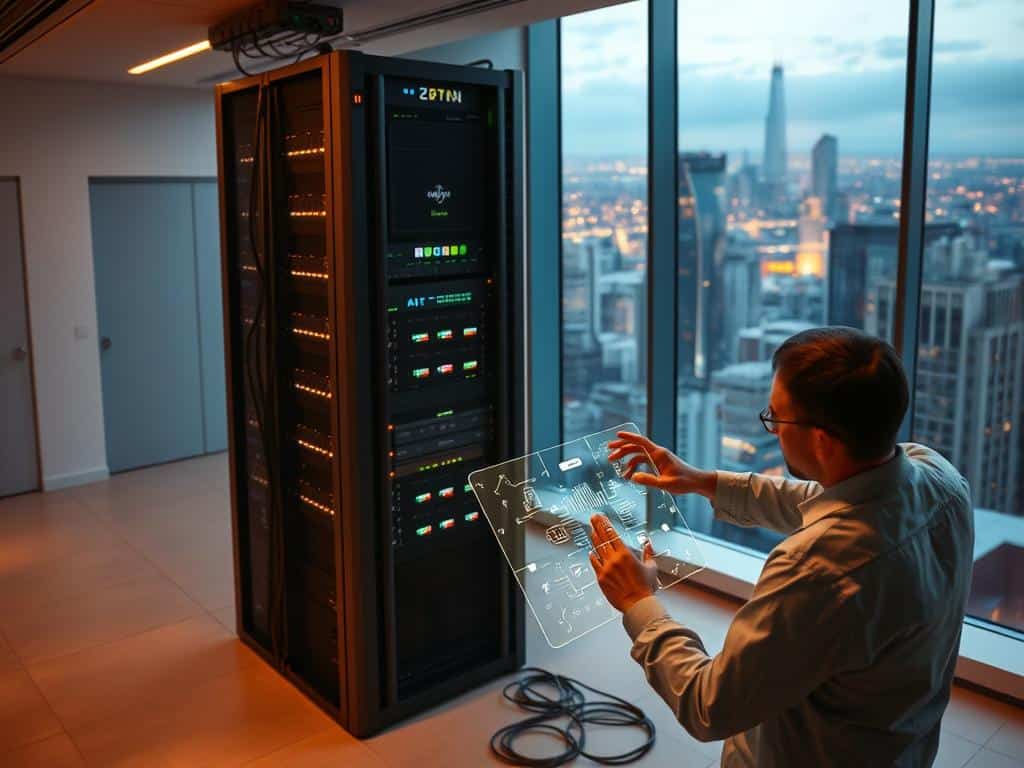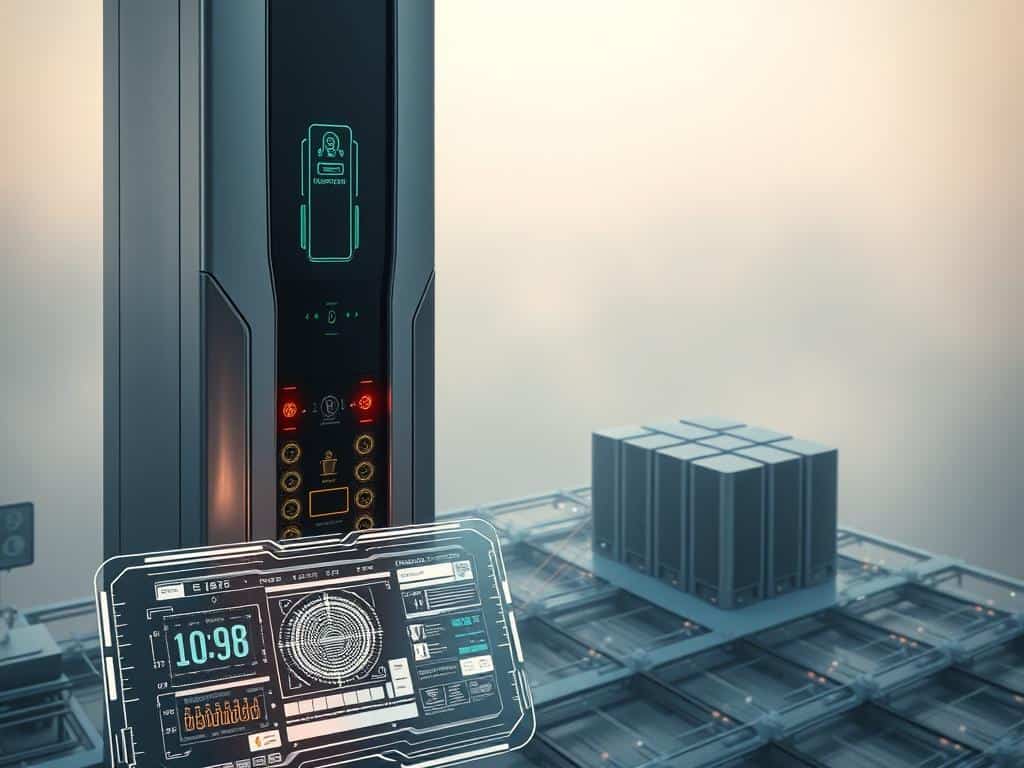I’ve dealt with data management in both personal and work settings. I often think about the old ways of processing data. Recently, I was working on a project that needed real-time data from IoT devices. But, the cloud systems were slow, making it hard for my team to act fast.
That’s when I learned about edge computing. It changes how we handle data by moving processing closer to where the data is. This makes things faster and more efficient. It’s a big deal, as it can make a huge difference in many fields, like healthcare and smart cities.
Key Takeaways
- Edge computing drastically reduces data processing latency.
- This technology complements the Internet of Things, improving device communication.
- Improved speed efficiency allows for faster decision-making in critical applications.
- Healthcare innovations benefit significantly from real-time data management.
- Edge computing supports the development of smart city infrastructure.
Understanding Edge Computing
Edge computing is a key concept in today’s tech world. It changes how we handle data, focusing on being close to where it’s made. This method helps cut downtime and improve user experiences by processing data locally.
Definition and Basic Concepts
Edge computing means data is processed near where it’s created. Devices like sensors and smart cameras handle data on their own. This approach makes data handling faster, safer, and more efficient.
Historical Context
Edge computing started early in computing history. As networks grew, the need for quicker data processing became clear. Old systems were slow because data was processed in one place.
Thanks to tech advances, edge computing became possible. Now, many industries use it to work better and handle data quickly.
Benefits of Edge Computing
Edge computing offers many benefits that change how we handle data. It works by putting computing power near the data source. This leads to big improvements in several areas.
Reduced Latency
One key benefit is how it cuts down latency. Processing data close to where it’s created means faster responses. This is critical for areas like car safety and remote monitoring, where quick action is essential.
Enhanced Security
Edge computing also boosts security. By processing data locally, the chance of data being intercepted goes down. This local approach lets companies set up stronger security measures, protecting against threats.
Improved Efficiency
Edge computing also makes operations more efficient. By moving processing tasks closer to the data, companies can work better and use less bandwidth. This results in quicker data analysis and better use of resources, boosting productivity.

Applications of Edge Computing
In today’s fast world, edge computing is making a big splash. It makes things work better by processing data right where it’s needed. This leads to many useful uses.
Internet of Things (IoT)
Edge computing is key for IoT. It lets devices like smart thermostats and cars handle their own data. This means they can make decisions fast, making our lives better.
It also cuts down on cloud use. This means less delay and less energy use.
Healthcare Innovations
Edge computing is changing healthcare for the better. It helps medical devices watch over patients in real-time. This way, doctors can act fast if something goes wrong.
This makes patient care better and uses resources wisely.
Smart City Infrastructure
Edge computing is changing cities too. It connects things like traffic and safety systems. This lets cities manage lots of data right there.
It makes services better and faster. This makes cities more lively and fun for everyone.
Conclusion
Edge computing is changing the game in the tech world. It makes data processing faster and more efficient. This is good news for many industries.
Edge computing does more than just speed things up. It also makes things safer and works better overall. This is a big deal.
Looking ahead, edge computing will get even better with 5G and AI. This mix will open up new ways for businesses to work smarter. It’s exciting to think about what’s coming.
Edge computing is more than just a trend. It’s going to be a key part of our digital future. It will lead to new ideas and chances in many areas. I’m eager to see how it will change our world.




